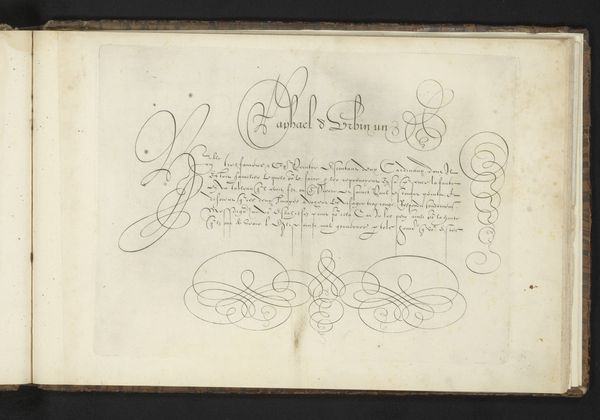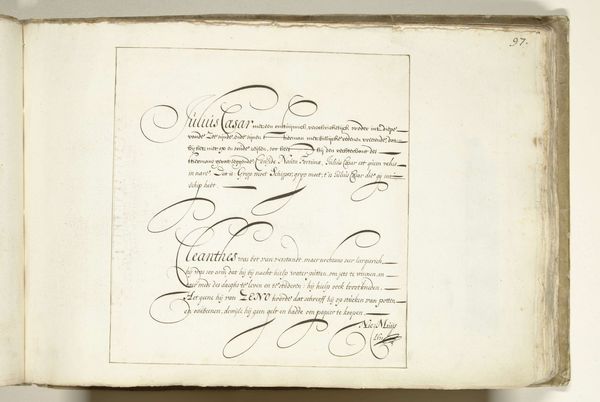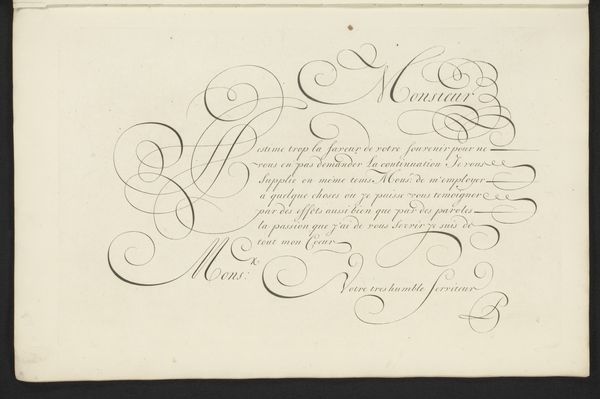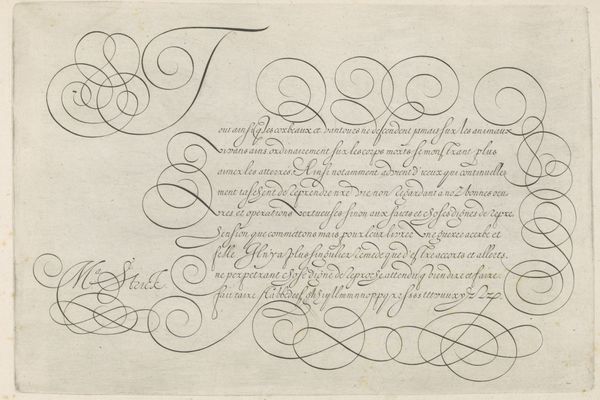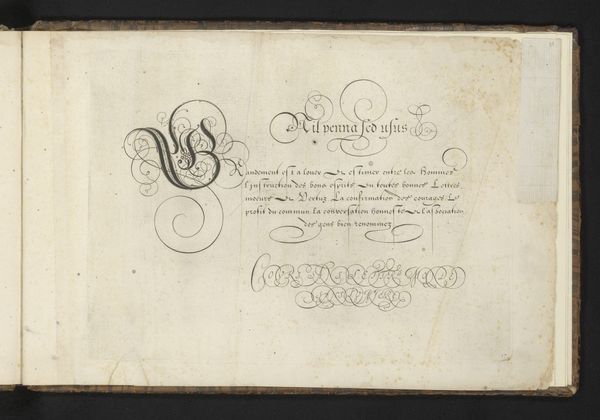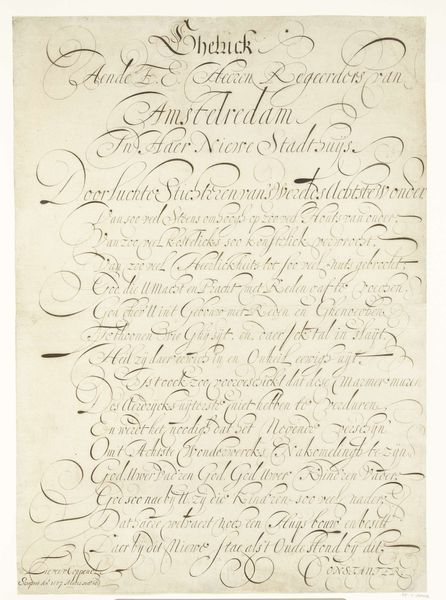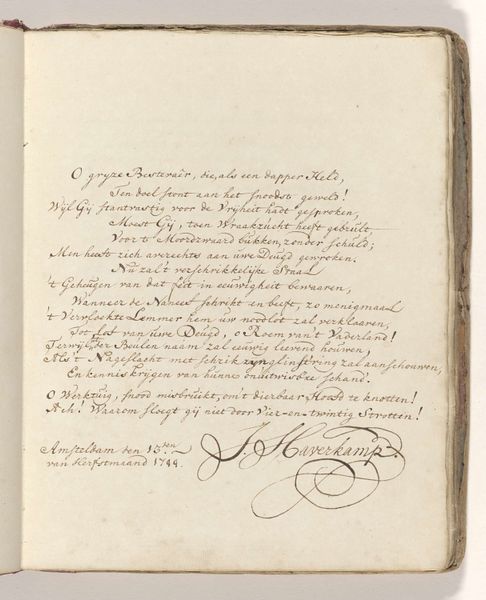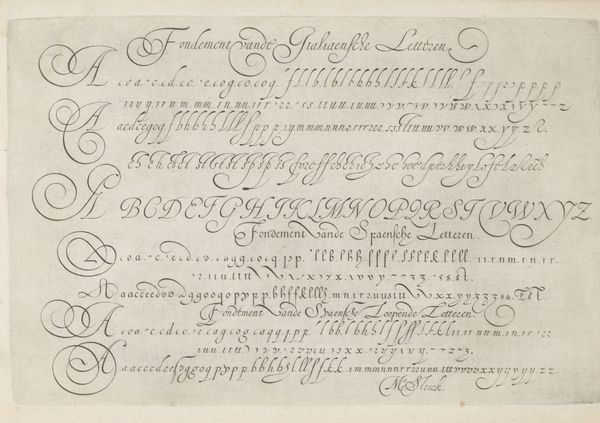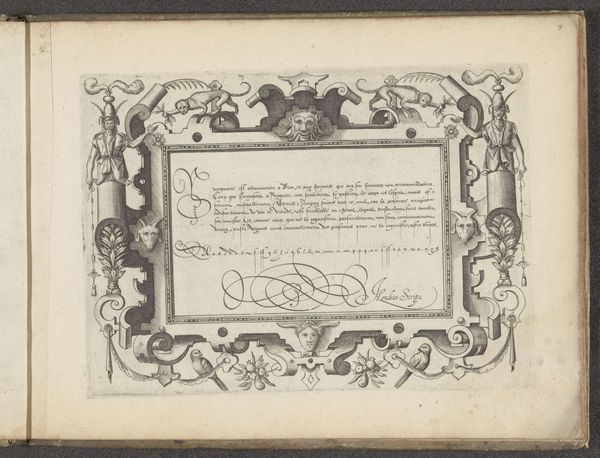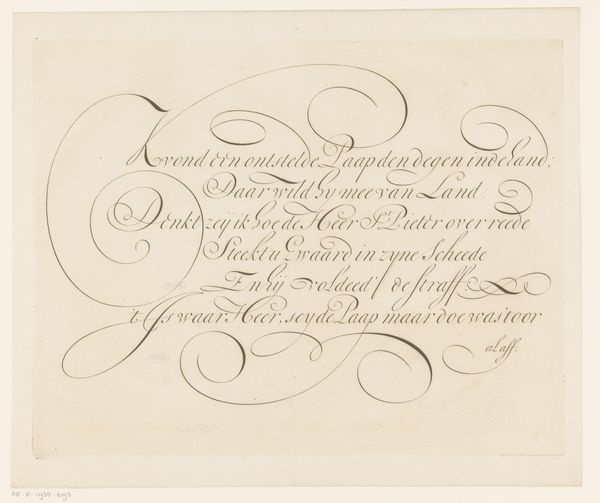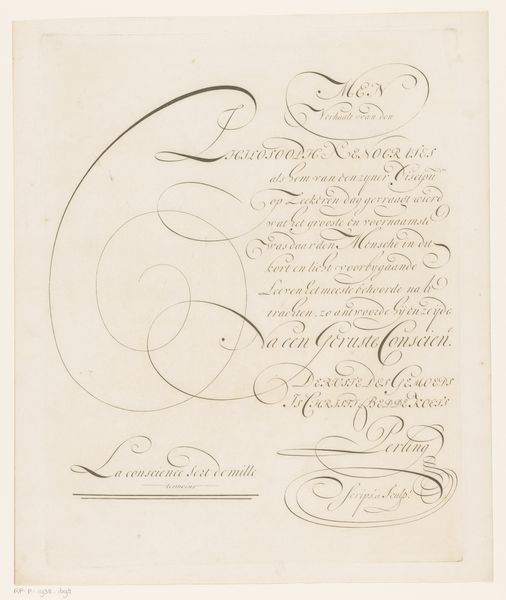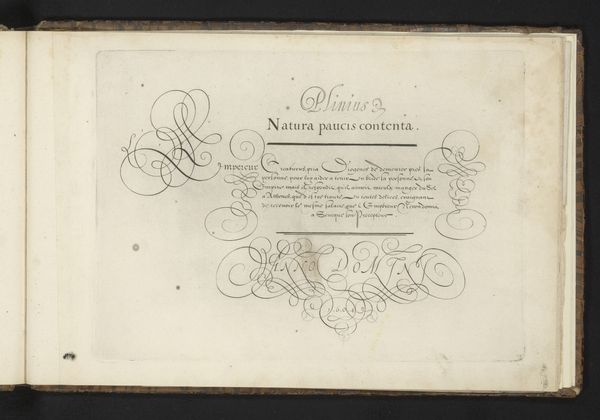
drawing, paper, ink
#
drawing
#
dutch-golden-age
#
paper
#
ink
#
genre-painting
#
calligraphy
Dimensions: height 243 mm, width 360 mm
Copyright: Rijks Museum: Open Domain
Editor: So, this is Nicolaas Muys' "Demonstratie van schoonschrijfkunst," or "Demonstration of Calligraphy," from 1671. It’s a drawing in ink on paper. I’m struck by the contrast between the formality of the calligraphy and the almost playful, whimsical flourishes. What do you make of it? Curator: This is fascinating. Calligraphy, at this time, was far more than just penmanship; it was a powerful cultural symbol. Notice how the script seems almost to dance across the page? What does that evoke for you? Editor: I guess it feels both precise and expressive at the same time. It reminds me of formal dances. Curator: Exactly. It carries echoes of ritual, doesn't it? The flourishes and the letterforms all speak to the symbolic importance of order, balance, and beauty within 17th-century Dutch society. Calligraphy was considered an art form, laden with meaning. How does the act of writing itself feature in this piece, separate from its semantic content? Editor: I suppose the act of demonstration implies knowledge being passed down or performed for others, like a display of skill and erudition. It isn’t just about what is written but how the text is made. Curator: Precisely. The cultural memory embedded within the strokes and forms. Do you see hints of personal or professional identity conveyed here, not just information, within these characters? Editor: It’s made me rethink calligraphy, no longer just as writing, but as a form of cultural expression. The skill and mastery it represents, and its place within its time. Curator: Agreed. The image of writing gains further meaning.
Comments
No comments
Be the first to comment and join the conversation on the ultimate creative platform.
